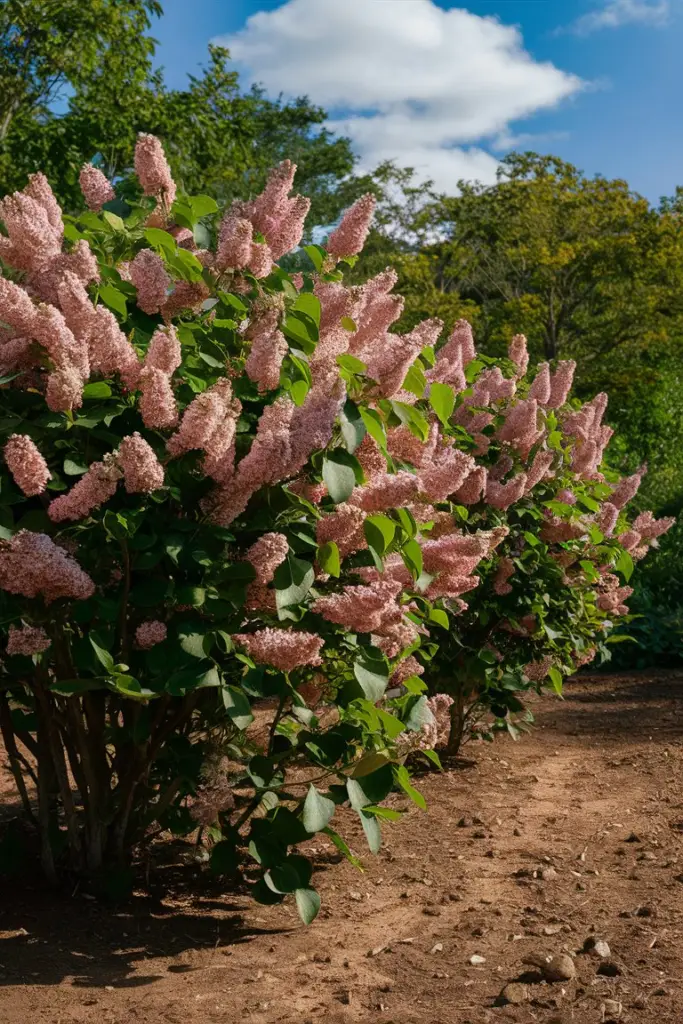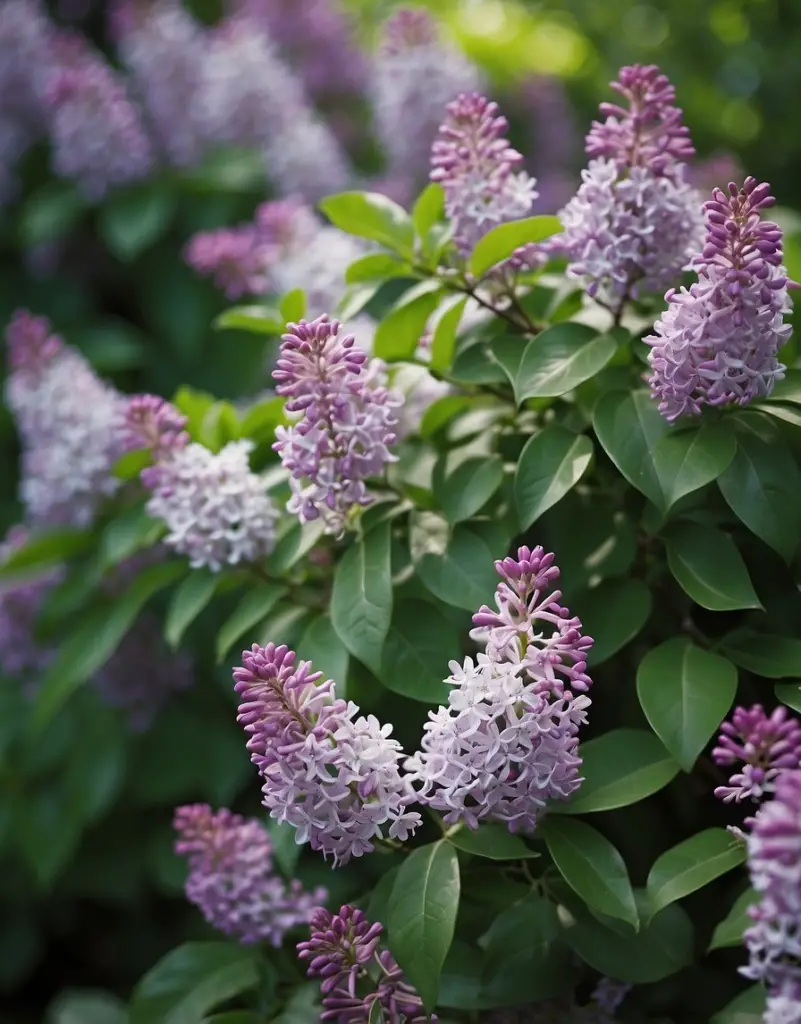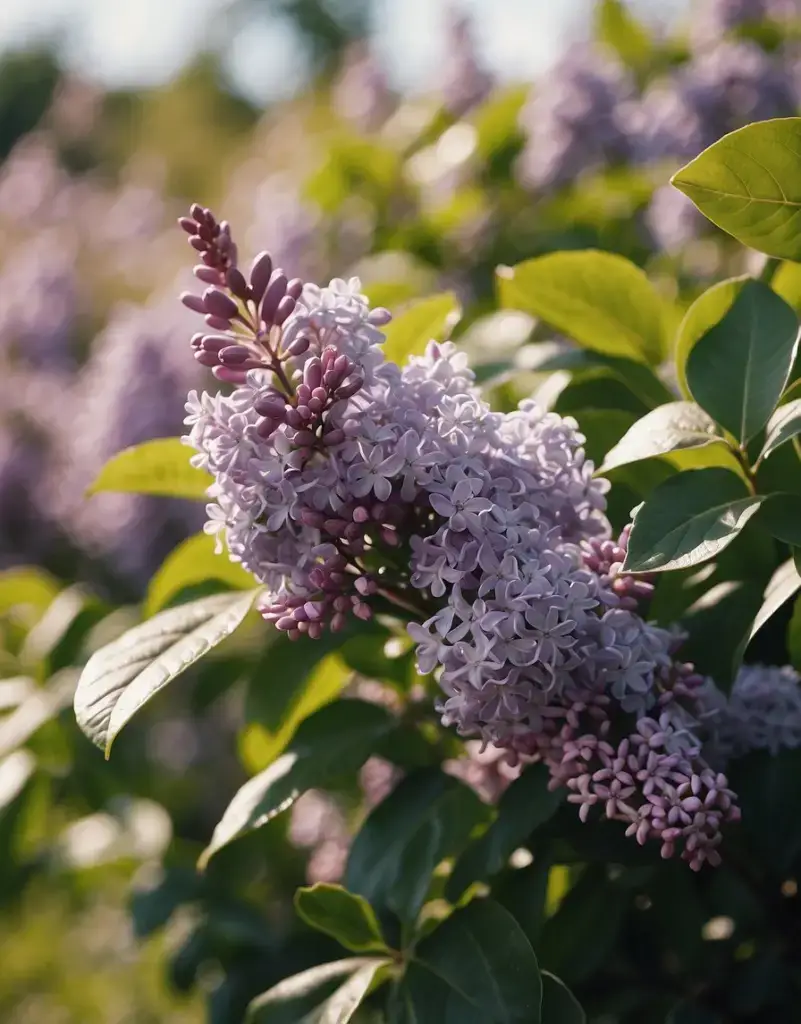Discover how to cultivate and maintain lovely lilacs in your yard. Learn the most important techniques for growing, trimming, and caring for healthy lilac bushes.
Lilacs are a popular addition to any garden because of their beautiful blossoms and captivating scent.
You are in the perfect place if you have always wanted a luxuriant lilac plant in your yard.
We’ll go over the crucial procedures in this post to assist you develop and care for a flourishing lilac garden that will delight you for years to come.
Getting to Know Lilacs
Lilacs are cherished for their beautiful, fragrant blooms and rich history. These flowering shrubs are native to the Balkan Peninsula in southeastern Europe, where they naturally grow on rocky slopes. Over time, lilacs have been cultivated worldwide, symbolizing the arrival of spring and the beauty of nature. Early settlers brought them to North America, where they became a staple in gardens, admired for their lovely scent and vibrant flowers.
Popular Lilac Varieties

Lilacs come in a variety of types, each with its own unique characteristics. The common lilac, Syringa vulgaris, is perhaps the most well-known, blooming in mid-spring with fragrant flowers but being prone to powdery mildew. Other varieties like the Meyer lilac are compact and ideal for smaller spaces, while the Japanese tree lilac grows taller, making it perfect for larger landscapes. Each variety has its own charm, offering gardeners many options to choose from depending on their preferences and garden size.
Lilac Care Requirements

To keep lilacs healthy and blooming year after year, it’s important to meet their basic care needs. These include providing adequate sunlight, the right type of soil, proper watering, and occasional pruning. Lilacs are relatively low-maintenance but do best in the right environment.
Sunlight Requirements
Lilacs thrive in full sunlight, needing at least six to eight hours of direct sunlight each day. Without enough light, they may struggle to produce blooms, so plant them in a sunny location where they can soak up plenty of rays. This will ensure strong, healthy growth and abundant flowers.
Soil Requirements
Lilacs prefer well-drained, slightly acidic to neutral soil with a pH between 6.0 and 7.0. If your soil is too acidic, adding lime can help raise the pH. Conversely, if the soil is too alkaline, sulfur can lower it. Ensuring the soil is well-drained is crucial, as lilacs don’t tolerate soggy conditions, which can lead to root rot.
Watering Requirements
Regular watering is essential, especially during dry periods. Water deeply once a week, allowing the moisture to penetrate to the roots. Lilacs appreciate consistently moist soil during their first year to establish strong roots. Once established, they become more drought-tolerant but still benefit from occasional watering during hot, dry weather. Adding mulch around the base of the plants helps retain moisture and reduce weeds.
Fertilizing Requirements
Lilacs don’t need heavy fertilization. A light application of balanced fertilizer, such as 10-10-10 or 5-10-5, in late winter or early spring is usually sufficient to encourage healthy growth and vibrant blooms. Organic compost can also provide essential nutrients. Be careful not to over-fertilize, as too much can lead to excessive foliage at the expense of flowers.
Spacing Requirements
Proper spacing between lilac bushes is key to ensuring good air circulation and preventing disease. Depending on the variety, plant your lilacs 5 to 15 feet apart to give them room to grow and flourish. This spacing also makes it easier to prune and maintain the bushes as they mature.
Planting Your Lilacs
The timing of planting lilacs is important for successful growth. Early spring or fall, when the temperatures are cooler, is ideal. Planting during these times allows the roots to establish without the stress of hot summer weather. Be sure to choose a sunny location with well-drained soil, and follow the steps for planting to ensure your lilacs get off to a good start.
Best Planting Times
Early spring, as soon as the ground is workable, or fall, about six weeks before the ground freezes, are the best times to plant lilacs. This gives the plants time to settle in before facing extreme temperatures, ensuring healthier growth.
Planting Steps
Start by selecting a sunny spot in your garden. Dig a hole twice as wide and just as deep as the root ball. Place the lilac in the hole, spread the roots, and backfill with soil. Water thoroughly, and add a layer of mulch around the base to retain moisture and suppress weeds.
Aftercare for New Plants
Newly planted lilacs need consistent watering to establish strong roots. Watch for pests and diseases, and treat them promptly if they appear. While pruning isn’t necessary in the first few years, removing spent flowers can encourage new growth.
Pruning Practices
Pruning lilacs is essential for maintaining their shape and encouraging more blooms. The best time to prune is right after they finish flowering in late spring. Focus on removing spent blooms and thinning out overcrowded branches to improve air circulation. For overgrown bushes, a rejuvenation pruning plan over three years will help restore their vigor.
Pest and Disease Management

Lilacs are relatively hardy but can be affected by pests such as aphids, borers, and spider mites. Regularly inspect your plants for signs of damage, and treat infestations with insecticidal soap or neem oil as needed. Diseases like powdery mildew can also occur, especially in areas with poor air circulation. To prevent this, ensure proper spacing and prune to allow air to flow through the bush.
Encouraging Blooms
To encourage abundant blooms, focus on providing optimal conditions for your lilacs. Ensure they receive enough sunlight, water them consistently but not excessively, and prune them at the right time. Deadheading, or removing spent blooms, can also help direct the plant’s energy into producing more flowers.
Bloom Enhancing Tips
Placing your lilacs in a location with full sun is key for bloom production. If your soil isn’t naturally alkaline, adding lime can improve the conditions for flowering. Regular pruning, especially after blooms have faded, keeps the plant healthy and encourages new growth.
Propagating Lilacs
Propagating lilacs is a rewarding way to expand your garden. You can propagate lilacs by taking cuttings or separating suckers from the base of mature plants. Both methods are effective and result in new lilacs that carry the same characteristics as the parent plant.
Methods of Propagation
Taking cuttings involves selecting young, tender growth and encouraging root formation in moist soil. Separating suckers requires digging out the shoots that grow near the base of an established plant. Both methods are relatively simple and can lead to successful new plants with the same traits as the original lilac.
Transplanting Tips
When transplanting lilac cuttings or suckers, choose a sunny, well-drained location and avoid the heat of summer. Dig a hole that accommodates the root system, plant your new lilac, and water it well. Mulching around the base helps retain moisture and reduces weed competition.
Troubleshooting Common Problems
Sometimes lilacs face challenges like failing to bloom or developing yellow leaves. These issues can often be traced back to environmental factors like inadequate sunlight, improper watering, or soil deficiencies. Addressing these problems early ensures your lilacs stay healthy and continue to thrive.
Non-Flowering Issues
If your lilacs aren’t flowering, check if they are receiving enough sunlight. Lilacs need at least six hours of direct sunlight daily. Poor pruning or soil that’s too wet or too acidic can also prevent blooming. Correcting these issues can help restore their flowering potential.
Yellowing Leaves
Yellow leaves may be caused by overwatering, nutrient deficiencies, or pests. Ensure your lilacs are planted in well-drained soil, and avoid waterlogging. Fertilizing and pest control measures can also address the problem.
End-of-Season Care
As the growing season ends, prepare your lilacs for winter by watering them thoroughly before the ground freezes. Mulching and light pruning can help protect the plants from the cold, ensuring they emerge healthy and ready to bloom next spring.
Preparing for Winter
Watering your lilacs deeply before winter helps their roots stay hydrated through the cold months. Adding mulch around the base insulates the roots and preserves moisture, while light pruning removes any damaged branches.
Annual Maintenance Checklist
To keep your lilacs healthy, focus on pruning, watering, fertilizing, and keeping the area free of weeds. These simple tasks will help your lilacs thrive and reward you with beautiful blooms year after year. Regular inspection for pests and diseases is also crucial to maintaining their health.

